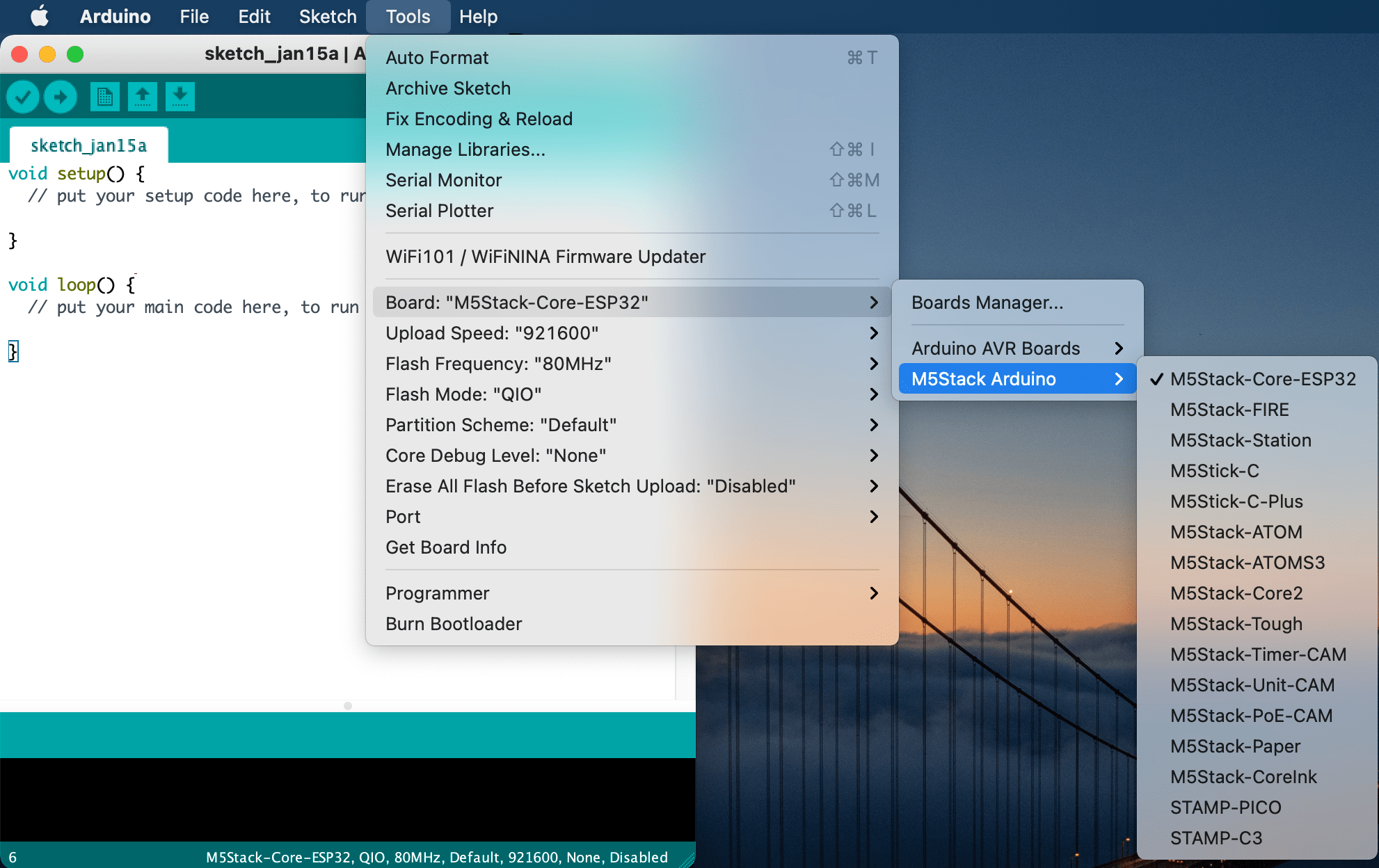Connected Things
Setup
You can program the M5StickC using the Arduino IDE. Follow these M5Stack setup instructions.
NB: at the time of writing one deviation from the setup is require. In the board drop down menu, you must select M5StickC and NOT M5StickC Plus

What is Inside the Kit?
Inside your kit you should find:
- M5Stack M5StickC Plus
- USB C to USB A Cable
Where Can I Buy Equipment?
If you have to buy some extra sensors or components for your project, the following are reputable suppliers that deal in RoHS compliant materials. Of course, it never hurts to ask if we have something already.
There may also be a small selection of components available at the ECA Material Hub.
Where Can I Work with Electronics?
If you need to find facilities, first port of call should always be the ECA Handbook. You can search for facilities by type. At the time of writing, workshops supporting electronics are
There is also uCreate Studio in the Main Library.
How do Join Code Together?
A lot of work in Electronic things will be combing separate ideas into one sketch. An outline of the process is covered here, but speak to your course tutor for further advice.
How Do I Ask a Good Question?
The majority of this kind of work revolves around asking questions when you inevitably get stuck. Outlined below is a system that should help you to ask well formed questions about electronics and programming. You will likely even answer the question in the process.
- Create a minimal, complete, reproducible example
- Minimal – Use as little code as possible that still produces the same problem
-
- Restart from scratch. Create a new project / target, adding in only what is needed to see the problem. Use simple, descriptive names for functions and variables – don’t copy the names you’re using in your existing code.
-
- Divide and conquer. If you’re not sure what the source of the problem is, start removing code a bit at a time until the problem disappears – then add the last part back.•
-
- Complete – Provide all parts someone else needs to reproduce your problem in the question itself. If the problem requires a library, include which one The problem might not be in the code that you think it is in.
- Reproducible – Test the code you’re about to provide to make sure it reproduces the problem
- Describe the problem. “It doesn’t work” isn’t descriptive enough to help people understand your problem. Instead, explain what the expected behaviour should be.
- Eliminate any issues that aren’t relevant to the problem.
- Double-check that your example reproduces the problem
- DO NOT post images of code, data, error messages, etc.
- copy or type the text into the question.
- Share your code:
- if your program is fairly simple (i.e. just a main function and 100 or so lines) then share your code in Teams
- in the later stages share with your 1TB OneDrive allocation.
- Write a title that summaries the specific problem
- If you’re having trouble summarising the problem, write the title last - sometimes writing the rest of the question first can make it easier to describe the problem.
- Include any error messages, OS version or any other relevant information